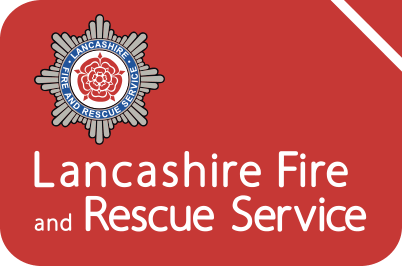We will continue to work collaboratively with a range of stakeholders and partners so that not only can we conduct our own business safety, regulatory inspection and enforcement activities in the most efficient and effective way possible, but also so that collectively we can maximise our resources to identify those most at risk from fire and thereafter plan, promote, support and deliver mutually beneficial and, wherever possible pro-active, protection related activities. At all times seeking to achieve the best outcomes with the minimum regulatory burden on businesses that are seeking to comply and keep their staff and visitors safe.
Although fire and rescue services have statutory responsibilities for promoting fire safety and enforcing the FSO the overarching objective of keeping people safe from fire and associated risks does not sit with fire and rescue services alone.
Fire safety legislation overlaps with a wide range of other regulation. Successful application of the FSO, and optimal use of resources to keep people safe from the risk of fire in the built environment and minimise regulatory burden for businesses, requires LFRS to work closely with a range of other regulators, including but not limited to:
· Local authority building controls - Local authorities have unique powers under the Building Act 1984 to enforce the building regulations and have non-compliant building work altered or removed.
· Approved inspectors - Approved inspectors are companies that can provide an alternative to obtaining building regulations approval from a local authority.
· The Care Quality Commission (CQC) - The CQC monitor, inspect and regulate services that provide health and social care.
· Local authority housing standards - Local authority housing provide advice, information and enforcement in relation to both the economic and consumer standards for social housing registered providers.
· Local authority environmental health - The local authority environmental health teams are responsible for the regulations and standards set by government for a wide range of business sectors and activities including, food safety, health and safety, environmental protection.
· Local authority and police licensing teams - The Local authority and police licensing teams provide support, guidance and regulate businesses, organisations and individuals who want to sell alcohol.
· Local authority trading standards - Within their role trading standards, amongst other things, enforce fair trading, monitor product safety, ensure age limits and restrictions are correct.
· Health and Safety Executive (HSE) - The HSE are the national regulator for workplace health and safety and the ‘Building Safety Regulator’[1]
· Police - Detect and investigate criminal offences and case build for the Criminal Justice Service.
Although LFRS always works closely with other relevant regulators after a fire has occurred when a joint investigation is required, the preferred approach is always to share intelligence and pre-plan proactive inspection programs based on risk before an incident has happened. This pre-planning can take many forms including formal planning meetings (e.g. the LACORS[2] approach for housing risks), multi-agency thematic inspections (e.g. peak risk inspections of licensed premises), using data sharing agreements or publicly published data (e.g. CQC Inspection outcomes) or simply via intelligence sharing from one agency to another after a poor inspection outcome or complaint received by one agency that highlights potential issues for another.
The overlap of legislation with other regulators provides an ongoing opportunity to conduct statutory and non-statutory consultations relating to proposed and actual building work and to proactively support future compliance by highlighting potential issues relating to forthcoming FSO compliance once premises are occupied.
Although LFRS is responsible for promoting and enforcing the FSO, the objective of keeping people safe from fire and associated risks is also shared by many organisations who do not necessarily have direct fire safety regulatory duties.
Utilising an intelligence led and risk-based approach we will also seek to identify the optimal organisations in this category with whom we can collaborate. In each case the objective being to ensure they are ‘aware’ of the built environment fire risks associated with their particular area of responsibility so that we can then support and ‘enable’ them to contribute to future risk reduction by co-developing approaches that help minimise the risk from fire in their part of the built environment where doing so is mutually beneficial.
By taking this approach we will create wider awareness of what ‘good compliance looks like’ and in addition to the obvious reductions in risk that come with this, the anticipated by-product is that when premises who are seeking to comply with their fire safety responsibilities are audited, they will require minimal auditors time and will attract good audit outcomes. This approach reduces the regulatory burden on premises and frees up inspecting officer time to deal with less compliant premises. We will seek to do this in increasingly innovative and engaging ways e.g. by delivering educational webinars. This approach will include but will be not limited to:
· Social Care Providers - commission specialised housing and care homes for both adults and children)
· Housing Associations - (provide social homes, shared ownership homes, and supported / specialist housing)
· Tenants Groups and Associations - (represent the voice and interests of residents and leaseholders)
Although our focus remains making Lancashire safer from fires and other emergencies, we recognise the natural link between successfully achieving our objectives and the resultant cashable benefits to health and social care in terms of less people entering their services with acute and critical needs after a fire. To ensure our offer remains current, informed and targeted, we will continue to engage in national, regional, Lancashire, and district level meetings with stakeholders and partners where there are clear and mutually compatible objectives.
Over the course of this strategy, we will:
Continue to develop strategic collaborations to raise fire safety awareness and improve fire safety standards in premises before inspections are undertaken.
[1] Building safety (hse.gov.uk)
[2] Guidance on fire safety provisions for certain types of existing housing (cieh.org)





